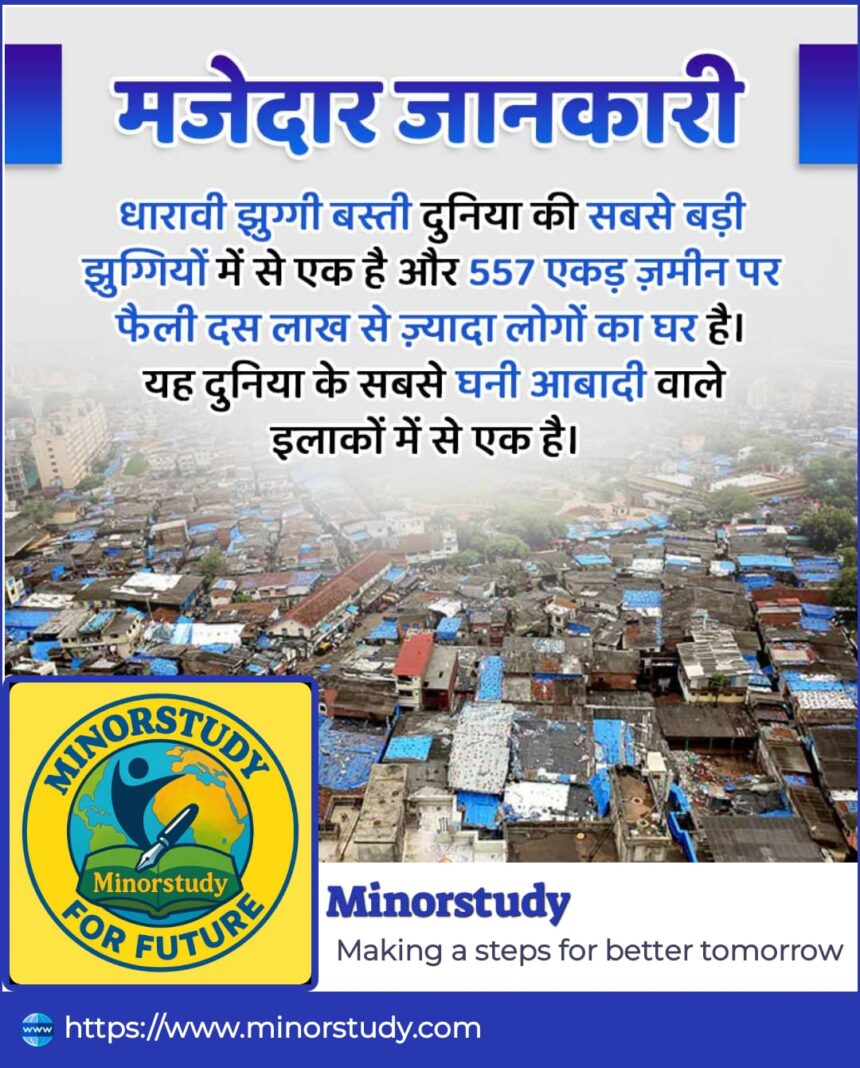Dharavi Slum That Reveal Its Inspiring Yet Harsh Reality
✨ Introduction
When we think of Mumbai, the financial capital of India, images of skyscrapers, Bollywood, and bustling markets often come to mind. Yet, amidst this wealth and glamour lies Dharavi Slum, one of the largest and most famous slums in the world. Spread across just 557 acres of land, it is home to more than one million people, making it one of the most densely populated areas on Earth.
- ✨ Introduction
- 📜 History of Dharavi Slum
- 📊 Timeline of Dharavi Slum Development
- ✅ 10 Powerful Facts About Dharavi Slum
- 🌍 Significance of Dharavi Slum
- 🙏 Wishing Messages (Human-Centric Tone)
- 📌 Important Points About Dharavi
- 🙌 Impact on Daily Life
- 📖 FAQs on Dharavi Slum
- 🌟 Conclusion – Dharavi’s Message to the World
Dharavi is a place of paradoxes—on one hand, it reflects poverty, overcrowding, and poor infrastructure; on the other, it is a hub of small-scale industries, resilience, and human determination. It is not just a slum—it is a living, breathing ecosystem of struggles, dreams, and survival.
This article explores the history, facts, timeline, significance, and daily life impact of Dharavi Slum, while highlighting its importance in shaping conversations on urbanization, poverty, and humanity.
📜 History of Dharavi Slum
The roots of Dharavi go back to the late 19th century. During British colonial rule, Mumbai (then Bombay) was rapidly industrializing. With the establishment of textile mills, dockyards, and factories, migrant workers from across India poured into the city.
1890s: The colonial government pushed poor communities and workers out of central Bombay. They resettled on marshy land near Mahim Creek, which later became Dharavi.
The area grew without planned infrastructure, leading to informal housing and unregulated settlements.
Over time, Dharavi became a hub for migrants from Tamil Nadu, Uttar Pradesh, Gujarat, and Maharashtra, each bringing their culture, food, and traditions.
By the mid-20th century, Dharavi was already recognized as a densely packed slum, but also a place of entrepreneurship and hard work.
📊 Timeline of Dharavi Slum Development
1890s: Emergence of informal housing for workers.
1940s–50s: Rapid expansion with the growth of industries in Mumbai.
1970s: Dharavi becomes synonymous with overcrowded slum life.
1980s–1990s: NGOs begin working in Dharavi to improve sanitation, education, and healthcare.
2000s: Dharavi becomes globally known after research studies and documentaries.
2008: International spotlight after the movie Slumdog Millionaire.
2020–2021: Dharavi receives global praise for effectively controlling COVID-19 despite high density.
✅ 10 Powerful Facts About Dharavi Slum
One of the Largest Slums in the World – Over 1 million residents live in 557 acres.
Population Density – Roughly 270,000 people per square kilometer, among the highest in the world.
Economic Powerhouse – Dharavi hosts over 5,000 small-scale businesses, producing textiles, pottery, leather goods, and even recycling plastic.
Annual Economy – Estimated at $1 billion per year, despite poor infrastructure.
Cultural Melting Pot – Home to Hindus, Muslims, Christians, and people from multiple Indian states.
Housing Reality – Many homes are just 10×10 feet rooms, shared by families of 4–5 members.
Limited Sanitation – About 1 toilet per 1,000 people, showing the severe shortage of facilities.
Global Recognition – Dharavi has been studied by urban planners worldwide as an example of informal urban resilience.
Education Struggles – Many children lack formal education but NGOs and community schools are making progress.
COVID-19 Model – Dharavi became a global case study for controlling the pandemic through strong community healthcare measures.
🌍 Significance of Dharavi Slum
Economic Significance: Dharavi contributes significantly to Mumbai’s informal economy, especially in manufacturing and recycling.
Cultural Significance: It represents India’s diversity, with multiple languages, cuisines, and traditions blending in one space.
Social Significance: Dharavi highlights issues of urban poverty, inequality, and housing rights, sparking debates on development and slum rehabilitation.
Global Significance: Dharavi is often seen as a case study in urban resilience, showing how human communities thrive even in difficult conditions.
🙏 Wishing Messages (Human-Centric Tone)
“On this day, let us honor the resilience of Dharavi’s people, who remind us that hope can shine even in the toughest conditions.”
“May every child in Dharavi find education, health, and opportunities for a brighter tomorrow.”
“Let us wish for a future where Dharavi is no longer seen as a slum, but as a thriving community with dignity and equality.”
📌 Important Points About Dharavi
Dharavi is not just poverty—it is also productivity and entrepreneurship.
The community has a strong social fabric, where neighbors support each other.
Dharavi shows the urgent need for urban reforms in India.
Despite hardships, people of Dharavi carry immense cultural pride.
Any attempt to redevelop Dharavi must respect the livelihoods and dignity of its residents.
🙌 Impact on Daily Life
For the residents of Dharavi:
Challenges: Lack of sanitation, overcrowded housing, poor healthcare, and limited access to clean water.
Strengths: Close-knit communities, small-scale industries, and resilience in the face of adversity.
Children & Education: Many children aspire to break the cycle of poverty through education, supported by NGOs.
Women’s Role: Women are active in household work and small businesses, forming the backbone of many families.
For society as a whole:
Dharavi teaches resilience, innovation, and survival skills.
It raises awareness about the gap between rich and poor in urban India.
It highlights the need for inclusive urban development policies.
📖 FAQs on Dharavi Slum
Q1: Where is Dharavi located?
👉 In central Mumbai, between Mahim and Sion.
Q2: How many people live in Dharavi?
👉 Over 1 million people, making it one of the most densely populated areas in the world.
Q3: Why is Dharavi famous?
👉 For being a large slum, its economic contributions, and its portrayal in films and studies.
Q4: Is Dharavi only about poverty?
👉 No, it is also a hub of entrepreneurship, resilience, and culture.
Q5: What is being done for Dharavi’s development?
👉 Various government redevelopment plans, NGOs, and community initiatives are working towards improving housing, sanitation, and education.
🌟 Conclusion – Dharavi’s Message to the World
Dharavi Slum is more than just statistics about poverty and overcrowding—it is a symbol of human strength and perseverance. Despite challenges, its people have built a thriving informal economy and a cultural melting pot that stands as a testament to resilience.
The harsh reality of Dharavi reminds us of the urgent need for equitable urban development, but its inspiring spirit tells us that human willpower can create life, hope, and dignity even in the toughest spaces.
For India and the world, Dharavi serves as a mirror of inequality and also as a lesson in community strength. The way forward lies in providing better infrastructure, education, and healthcare while preserving the vibrant spirit of this unique community.








